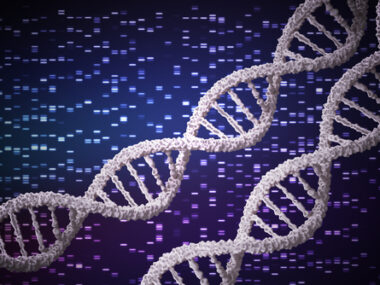Extracellular matrix dysregulated in vEDS patients’ skin cells: Study
ECM took on properties reminiscent of excessive scar tissue buildup
Written by |

Components of the extracellular matrix (ECM), the network of molecules that gives tissues their structure, are dysregulated in skin cells from people with vascular Ehlers-Danlos syndrome (vEDS), making it a possible target for therapeutic intervention, a recent study suggests.
The ECM took on properties reminiscent of a state of fibrosis, or excessive scar tissue buildup, which characterizes various connective diseases, genetic and protein analyses indicated.
“Therapeutics that target the dysregulated ECM proteins or help replace damaged tissue may improve clinical outcomes,” the researchers wrote in “Dysregulation of extracellular matrix and Lysyl Oxidase in Ehlers-Danlos syndrome type IV skin fibroblasts,” which was published in the Orphanet Journal of Rare Diseases.
vEDS is usually caused by mutations in the COL3A1 gene and disrupts the production of type III collagen, a connective tissue protein and a major component of the ECM. As such, proper tissue structure is compromised, leading to standard EDS symptoms of soft, stretchy skin that easily bruises, along with fragile arteries, muscles, and internal organs. Tears or ruptures in various organs can lead to severe and life-threatening complications.
Studying the ECM in vascular EDS
Here, researchers sought to learn more about how vEDS mutations affect the ECM’s structure and function.
Skin cells, or fibroblasts, were obtained from two related men who each had one copy of the p.G588S vEDS-causing mutation in the COL3A1 gene. Cells were also obtained from a healthy adult male donor.
Protein and genetic analyses of the cells were largely consistent with a dysregulated ECM in vEDS. Particularly, other types of collagen were increased in the vEDS cells, suggesting they were compensating for the dysfunctional collagen III.
Some altered genes and proteins were related to ECM remodeling, the dynamic process by which the ECM changes its structure. This occurs naturally to support normal cell growth and wound healing, but is also linked to certain cancers and fibrosis that marks various connective tissue diseases.
Proteins involved in fibrosis were also altered in the vEDS cells.
Notably, type III collagen levels were increased in vEDS cells relative to healthy ones. This may indicate the p.G588S mutation leads to a “mutant and misfolded” version of the protein that accumulates in the cells, the scientists said.
Levels of lysyl oxidase 2 (LOXL2), which belongs to the family of LOX enzymes, were increased in the vEDS cells and LOX activity was increased.
LOX enzymes work to bond collagen molecules together, called cross-linking, during ECM remodeling. This can lead to increased tissue rigidity that contributes to fibrosis. Indeed, increases in LOX activity have been associated with fibrosis in certain connective tissue diseases.
Consistently, a cross-linked form of collagen III was increased in the vEDS cells. When the scientists treated the cells with BAPN, a LOX inhibitor molecule, this version of the protein was reduced.
While such a molecule could have therapeutic potential for vEDS, administering BAPN in mouse models of Marfan syndrome, a related disorder, accelerated certain complications and led to premature death, the researchers noted.
“Understanding the timing, dose, and specificity of LOX inhibitors is important,” they wrote, adding, “there is dysregulation of ECM formation in vEDS and compensatory mechanisms at play.” This leads to a cellular profile “reminiscent of a state of fibrosis.”
In addition to molecules such as LOX inhibitors, “other approaches such as cell and gene therapies that target the dysregulated ECM proteins or help replace damaged tissue may improve clinical outcomes for vEDS patients,” the researchers said.






